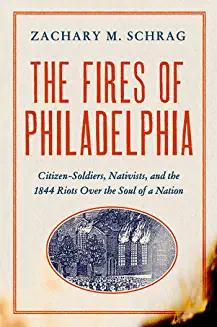It’s remarkable how selective our memories can be when it comes to history.
In school, I never learned about the 1921 Tulsa race massacre (https://www.tulsahistory.org/exhibit/1921-tulsa-race-massacre/). Like most of the rest of the country, I heard about it only recently. So it stands to reason that I would never have been taught about the 1844 riots in Philadelphia either.
At that time, the majority of Philadelphians was Protestant, and the King James Bible was being read in public schools. But the demographics were changing, thanks to an influx of Catholics — immigrants with different values who, the good citizens were told, would take their jobs and bring crime. What’s more, they had their own interpretation of the Bible. The situation became so inflamed that anti-Catholic “nativists” were motivated to go outside the law and riot, burning Catholic churches and beating people in the streets, in early May 1844. The cycle was repeated several months later, and was only stopped when the militia (the era’s main means of reestablishing order) began firing on the rioters.

If, like me, this chapter in history is unknown to you, The Fires of Philadelphia: Citizen-Soldiers, Nativists, and the 1844 Riots Over the Soul of a Nation by Zachary M. Schrag would be a worthwhile read (https://www.amazon.com/Fires-Philadelphia-Citizen-Soldiers-Nativists-Nation/dp/164313728X/ref=sr_1_1?). But be prepared to see some unsettling parallels between that time and our current era. The real value of these historical accounts is cautionary. Hopefully, we will realize the dangers of following that same path and, as I tell the students I teach, make better choices. That’s the benefit of studying history — avoiding making the same mistakes our ancestors have made.
But first we have to be informed.
